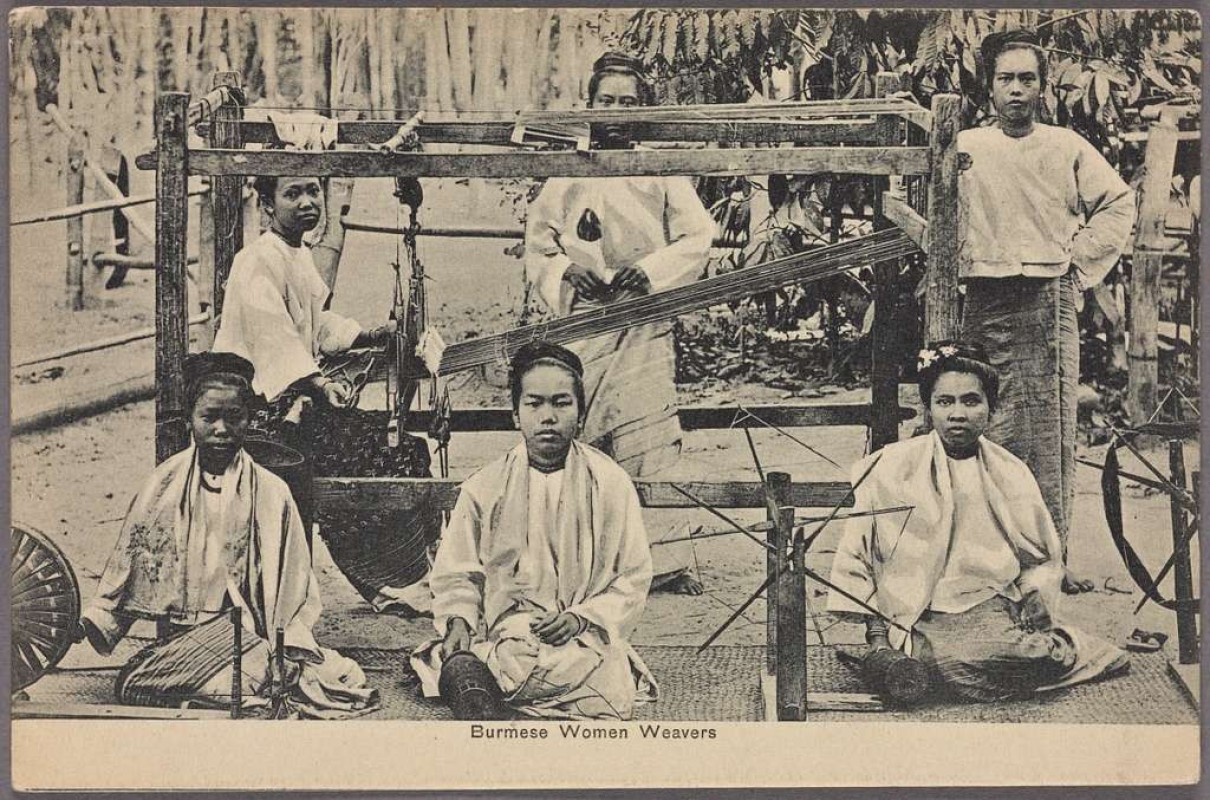Myanmar’s loom-weaving tradition

626

Thiri Khit Oo (NP News) - Aug 24
Clothes cover the body parts from external influences like sunlight, wind chemicals, mechanical hazards, and the environment. To make clothes, we need to weave to produce textiles. In Myanmar, loom-weaving traditions have been handed over from successive eras. Amarapura Township in Mandalay is well known for loom-weaving for standard textiles.
In ancient times, the textile weaved in Amarapura Township was a favorite of royal living. Families in Amarapura focused on loom weaving as their career. In those eras, Burmese ladies used to wear delicate and beautiful clothes with smooth textures in different designs according to the popularity and era. Among them, fine silk clothes were the best works of loom-weaving, rare, limited, and expensive due to standard quality.
In religious history, cotton cultivation and fine cloth weaving came from India to Myanmar together with Buddhism. Buddhist monks in those days were assumed to teach the people how to live by enjoying various methods of working for materials and consumer goods in conjunction with the mundane teaching that led to the attainment of nirvana during their mission to spread the teaching of the Buddha throughout the world. Since then, loom weaving culture can be said flourishing in Myanmar.
In those days, Burmese men cultivated cotton trees, mae trees, and saffron in every house. Ladies and wives took part in the process of yielding, grinding, and weaving. Those ladies tend to work at their homes as their own domestic business.
In loom weaving, there are many steps, and each step also has artistic and artful processes. The fiber from ground cotton is collected to make yarn through weaving with whorl. In the warping step, yarn will be fastened onto the loom vertically to weave the other strands of yarn through. In this step, the yarn needs to be strong and smooth balancing the thickness to endure constant friction during the weaving process. In the weft step, the yarn weave through the warp to create designs. In this step, the color and thickness are added and the more types of weft yarn are used, the more intricate the design will be. In this part, the weft is weaved through the warp horizontally with fastened onto the loom vertically. In the weaving process, tapestry needles made of wood with a large hole in the middle are used to pull the weft yarn through the warp easily. Then, the process of shed stick, shuttle, and weaving comb has to be carried out.
Successive administrations encouraged handicrafts and culture to be developed across Myanmar and after years passing through, this became the traditional business of Burmese people.
Entering modern days, many industrialized and mechanized have been used to produce a various type of clothes and woven fabric. However, some families across Myanmar have been maintaining the culture of loom weaving as a tradition. The successive governments are also making efforts to support the loom weaving culture to flourish again.
Obviously, Myanmar women and ladies still cling to wearing the typical outfits of longyi and blouses in traditional styles, as in formal events and celebrations. Especially, university students, government officials, and medical physicians are the prominent figures who consistently wear traditional dresses, mostly woven fabrics.
Reference - Information and Public
Relations Department
- MWD Webportal
- Master Class
- AUTODESK Instructables